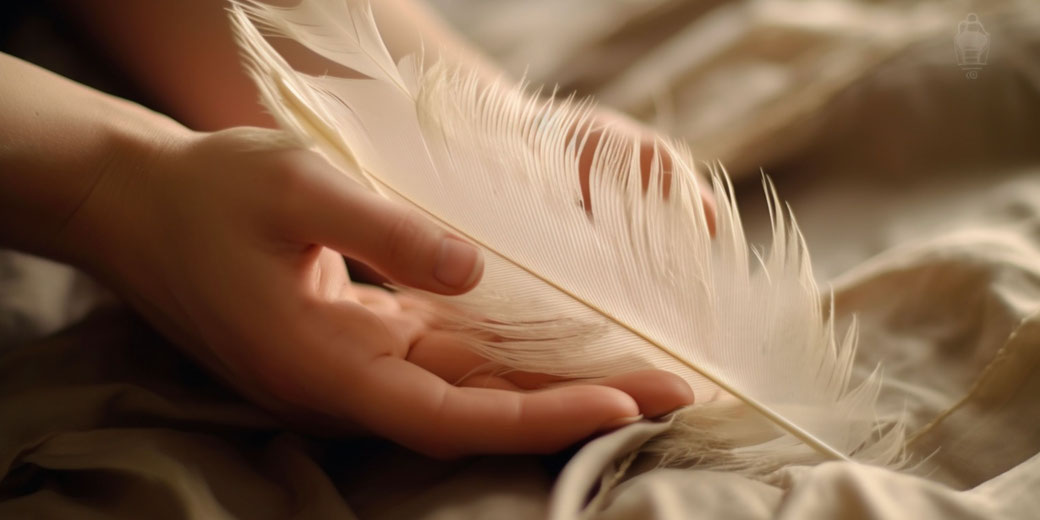Why receiving a white feather during WWI embarrassed a generation of young men

The White Feather Movement was a controversial and highly symbolic campaign that emerged during World War I. It was a phenomenon that saw women handing out white feathers to men who were not in uniform.
This strange act was meant to symbolize their cowardice in an attempt to shame them into enlisting as soldiers.
How did this practice begin?
In August 1914, at the very start of World War I, Britain saw the rise of a campaign encouraging women to shame able-bodied men not in uniform by presenting them with a white feather, which was a well-known symbol of cowardice).
On the 30th of August 1914, retired Admiral Charles Penrose Fitzgerald even organized a group of 30 women in Folkestone to begin this practice. The press quickly picked up the story.
For example, The Daily Mail ran an article on 31 August 1914 titled 'Women’s War: White Feathers for ‘Slackers’', in which they reported that young ladies were publicly handing out feathers to “every young slacker found loafing” about town.
The idea spread “with astonishing rapidity” as bands of women combed beaches, trams, and public places to pin white feathers on civilian men.
The campaign’s success even prompted government officials to react and, by late 1914, the government had to issue special badges to men in essential civilian jobs so they could avoid harassment by patriotic feather-givers.
It has been claimed taht women who were members of prominent suffragette organizations would also personally hand these feathers to men in the streets or at social gatherings.
However, there are no sources from 1914 that specifically link the suffragette movement to the handing out of white feathers.
Over time, it also become common to send them through the mail.
Social pressure during the White Feather Movement
At the time, all men were expected to be brave and strong. These characteristics were meant to culminated in a willingness to fight for their country.
The white feather was meant to be a direct attack on a man's sense of masculinity.
This manipulation of societal norms created immense pressure on men to enlist, even if they had reservations or valid reasons not to.
What made things was the public act of handing out white feathers in front of friends, family, and even strangers.
The fear of being labeled a coward in public was a strong motivator for many to join the military.
This frequently occurred in various social settings: workplaces, social gatherings, and public transportation.
In addition, newspapers and other media outlets of the time often supported the movement.
They published stories that glorified enlistment and vilified those who did not join.
As a result, this media coverage amplified the social pressure, making it a nationwide phenomenon.
Sadly, the social pressure extended to families as well. Wives, mothers, and sisters were often encouraged to persuade the men in their lives to enlist.
Some women were even criticized if their male family members did not join the military.

The impact on young men and their families
Since the campaign targeted men not in uniform, soldiers out of uniform were sometimes mistaken for non-enlistees.
This led to the absurd situation where men who had already shown bravery on the battlefield were publicly accused of cowardice.
Also, there were many men were ineligible for military service due to genuine medical conditions or deeply personal physical disabilities.
Despite their legitimate reasons for not enlisting, they were still targeted by the White Feather Movement.
Ultimately, this led to public humiliation for some individuals who were already dealing with personal challenges and hardships.
The movement also affected those who were either too young or too old to serve.
Young boys who looked older than they actually were but were eager to prove their bravery, were sometimes unfairly targeted.
Similarly, older men, who were past the age of enlistment, were also victims. This misdirected shame put undue pressure on individuals who were not even eligible for military service.
As a result, the public shaming, especially when misdirected, had a profound impact on the mental well-being of many of those who were targeted.
The humiliation and societal pressure led to feelings of guilt, anxiety, and depression for some.
The impact on governments
The White Feather Movement, along with other recruitment campaigns, contributed to a general shift in public opinion towards compulsory military service.
As voluntary enlistment rates began to decline, the government felt the pressure to ensure enough soldiers for the front lines.
In 1916, the Military Service Act was introduced in Britain, making conscription mandatory for single men aged 18 to 41.
Later amendments expanded this to include married men as well.
In contrast, Australia's experience with the White Feather Movement and societal pressures for enlistment was different from the UK.
Although, it still had a significant impact on government policy.
Despite strong recruitment campaigns, voluntary enlistment was not sufficient to meet the demands of the war.
Australian Prime Minister Billy Hughes even attempted to introduce conscription through two referendums in 1916 and 1917.
The conscription debates were highly divisive in Australia, with strong opposition from labor unions and religious groups.
So, the White Feather Movement was part of the broader debate in the country at the time.
As a result, it reflected much larger tensions between patriotism, individual rights, and societal expectations.
However, in the end, both referendums were narrowly defeated, and conscription was never implemented in Australia during WWI.
When the war came to an end in 1918, the use of white feathers disappeared as well.
What do you need help with?
Download ready-to-use digital learning resources
Copyright © History Skills 2014-2025.
Contact via email
With the exception of links to external sites, some historical sources and extracts from specific publications, all content on this website is copyrighted by History Skills. This content may not be copied, republished or redistributed without written permission from the website creator. Please use the Contact page to obtain relevant permission.





